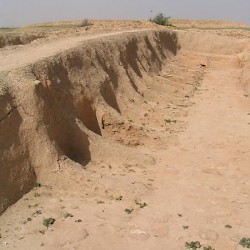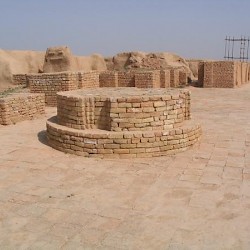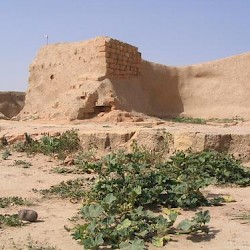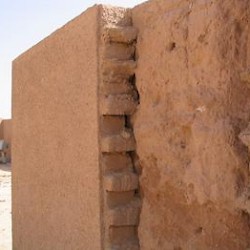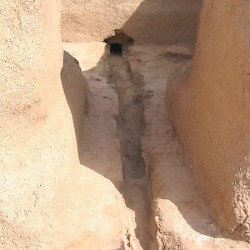Choga Zanbil - Inner Court
Dur Untaš: name of an Elamite town, famous for it ziggurat, modern Choga Zanbil.
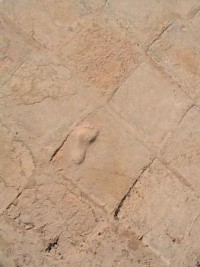
Between the ziggurat and the inner temenos wall was the inner court: a narrow, irregular area devoted to the cult of the gods. To the northwest of the temple mountain were the sanctuaries of Kiririša and Išnikarab (the goddess of oaths), separated by a small gate from the Napiriša temple outside the inner temenos wall.
Identification of these sanctuaries is not always easy. The room that was once called a stable has now been reinterpreted as a store room for cult statues or a kitchen. To the southwest of the ziggurat was a small round structure that is probably not, as one would expect, the pedestal of a statue, but a sundial.
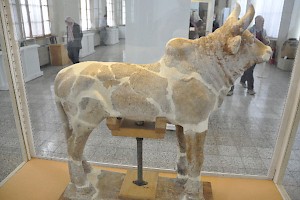
On the Inner Court stood a statue of a cow, which guarded one of the staircases that led to the summit of the ziggurat. The inscription read:
Untaš-Napiriša, son of Humban-Numena, King of Anšan and Susa, made this bull from glazed terracotta, the like of which ancient kings have never made. I placed it as a guardian at this sacred place, for the god Inšušinak, who blessed this sacred place with sanctity. I dedicated this, to attain long life and good health and to pass [lacuna] to my descendants. For this purpose I made this for the god Inšušinak, the deity who blessed this sacred place with sanctity. So the god Inšušinak, the deity who blessed this sacred place with sanctity, would accept this from me as a gift.
